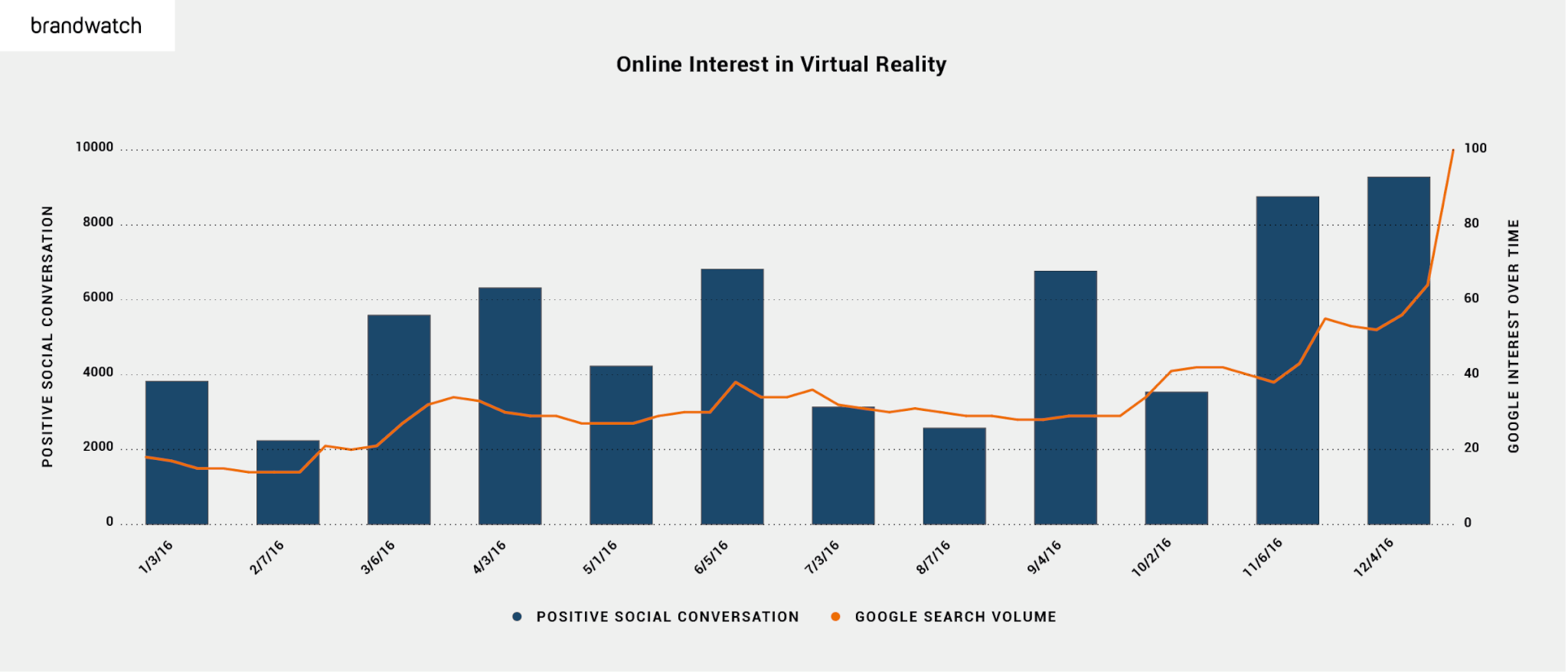Consumer insights have always been synonymous with marketing departments. Yet these valuable information nuggets need to be shared throughout the business, especially with product teams. They can reveal so much about how your brand is perceived in the market, what your customers really think of your latest feature update, and most importantly, the key to what people truly want. The world of consumer tech is one industry that would benefit from this type of information cross-pollination.
Market research findings should not be held in a silo. As Stewart Rogers’ recent research on the mobile marketing industry underscores, companies need to unite their internal efforts to ensure a holistic approach for better understanding customers.
Here are 5 ways consumer tech companies should be using social consumer insights for smarter product R&D in 2017.
1. Identify desired features and functionality
Consumer electronics continue to be ubiquitous in daily life. With that comes a diverse and technology-literate customer base.
That puts consumer tech companies on the offensive; each product iteration needs to be increasingly more innovative and useful to convince tech-savvy customers to buy. Otherwise, consumers will gladly (and publicly) call you out for bringing a useless novelty to market.
To give customers what they want, R&D teams need to be plugged into the consumer psyche. How? Market research, of course.
Think about the last time you had a complaint about a brand or were seeking hivemind recommendations for new tech. I’ll venture a guess: You posed your query to the internet.
According to Pew Research, 7 out of 10 Americans use social media to connect with one another, engage with news content, share information, and entertain themselves. That’s a lot of untapped insight about consumer preferences, whether you’re a smartphone giant or a startup engineer looking to develop your first product.
Let’s say your current customers are discussing an app that isn’t available on your device. If your product team is aware of this conversation (attention: marketing and consumer insights pros), they can take steps to make it available. The end result? Satisfied customers that feel heard.
Whether it’s device brightness, OS compatibility, or battery life questions, consumer tech companies can learn a great deal from the people actually using their products.
2. Turn gripes to glory
Consumer tech brands have no excuse not to use social consumer insights to discover pain points and provide solutions through product and service changes. The solution makes perfect sense: Build what consumers want into the next iteration of your product.
Research from our recent consumer tech Social Playbook shows that using customer issues for product dev is a missed opportunity in consumer tech. Nearly every major smartphone brand released a waterproof or water-resistant model in 2016. Cool, right?
But analysis of online smartphone discussion shows individuals were much more likely to discuss “breaking, shattering, or cracking” screens more often than water damage. The lesson here is simple: If consumer tech companies had tuned into the conversation, they could have alerted product dev teams to focus on creating more durable screens rather than creating a waterproof version. Give the people what they want.
3. Adapt, adapt, adapt
Here’s a common situation in the consumer tech industry: After initial excitement for a product release, the brand didn’t hit sales targets. Don’t be dismayed.
Underwhelming launches are actually opportunities to better understand consumers. Asking the right research questions after a disappointing release can provide more in-depth insights than a successful release does.
For instance, social data can uncover the reasons consumers didn’t purchase a product or update their software to get the new feature. The flexibility of social media data helps brands isolate the features most complained about, along with the adjectives and emotions most associated with them. Consistently tuning into the online consumer conversation is an easy win for brands to keep up with their customers. But that’s only half the battle. What brands then do with the consumer insights they discover is where the magic really happens. If you have access to unsolicited and unfiltered raw opinion from your consumers clamoring for a lightweight design, longer battery life, or new color options, apply that knowledge to the next generation of your product. And see the results skyrocket in the form of cold, hard sales.
There’s also something to be said about the speed of insights. Social consumer insights are unprompted in nature and allow brands to discover unknowns about product features or consumer wants/needs at the click of a button, instead of spending weeks or months embarking on lengthy market research methods such as surveys or focus groups. This is particularly relevant for the ever-evolving tech industry; it’s important to have a constant gauge on trends and brand health. Social enables brands to be reactive to fluctuating opinions, turning an insight from a piece of data into a call to action.
4. Convert hype into demand
Consumer technology companies have the most shared content on social media, thanks to beautifully produced launch videos, celebrity endorsements, and a whole lot of pizzazz and financial backing. When companies reveal new products at tech events or launch highly publicized new tech, conversations on social media spike along with consumer interest.
Diving into the conversations online during these times of high excitement can give companies important feedback on prototypes, new concepts, and works-in-progress. For consumer tech, R&D teams must capitalize on the inherent excitement surrounding their industry to turn hype into demand.
Companies should be listening to the sentiment behind the conversation and can use segmentation to parse language nuances that differentiate between consumer “wants” vs. “needs,” for example. Social research methodologies allow us to uncover granular insights even beyond standard sentiment, to better understand complex human emotions like sarcasm, frustration, or excitement. Why are consumers engaged with this specific launch or product feature? What exactly about the product do they like? Is there anything they don’t like? Is there an intent to purchase?
Asking these types of questions can help consumer tech brands pinpoint specific areas to focus on and create smarter content and deploy better marketing campaigns. The more tech brands understand consumers, the better they will become at engaging them, communicating with them, and selling to them. This goes for any brand, in any industry.
5. Invest in the future
The desire to be both new and innovative is a constant struggle within the tech sector. Investing in new product categories or software is very risky, especially when benchmarks, standards, and customer expectations don’t exist yet. We may think we’re ready for robot assistants that also cook and clean, but in actuality, we probably aren’t.
However, being inventive in risk-taking is more important now than ever before. Many new technology sectors introduced and developed in 2016 are destined to mature this year. Despite virtual reality sales being pretty meager, engagement around the heavily promoted sub-sector of consumer tech is promising for future purchases.
Be it virtual reality technology or smart refrigerators, only the companies willing to invest in innovation will reap the rewards of new tech segments. But even if customers are excited about a new technology, if they can’t understand how it’ll make their lives easier, they won’t spend their money on it. It’s vital that consumer tech brands build messaging and content that clearly and in a familiar vernacular explains to their customers exactly how the latest product or high-tech feature will be the game-changing solution to a consumer problem or need.
After all, isn’t tech supposed to make our lives easier?
 Will McInnes is CMO at social intelligence company Brandwatch. He is a passionate pundit on 21st-century business and how the internet is radically changing our personal behavior, our organizations, and our society. Prior to joining the Brandwatch team, Will founded the NixonMcInnes agency.
Will McInnes is CMO at social intelligence company Brandwatch. He is a passionate pundit on 21st-century business and how the internet is radically changing our personal behavior, our organizations, and our society. Prior to joining the Brandwatch team, Will founded the NixonMcInnes agency.
VentureBeat's mission is to be a digital town square for technical decision-makers to gain knowledge about transformative enterprise technology and transact. Learn More


